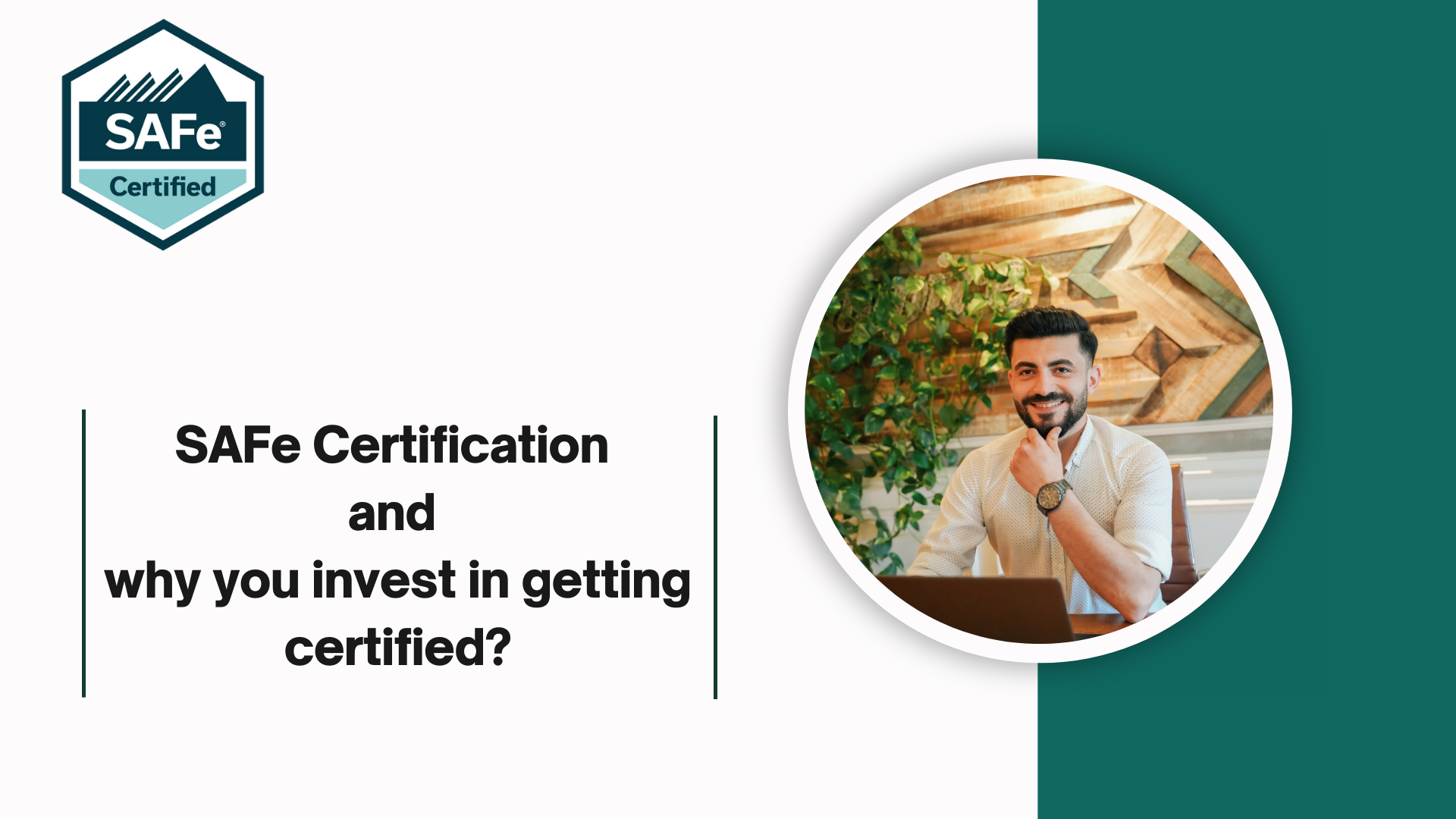SAFe certification (Scaled Agile Framework certification) is designed to help professionals implement Agile practices across an enterprise. SAFe stands out as one of the most popular frameworks for scaling Agile methodologies, making it crucial for professionals looking to work in Agile or Lean environments. But why should you invest in getting SAFe certified?
SAFe helps organizations:
- Align teams and departments
- • Improve product quality and delivery speed
- • Adapt to changing business needs
- • Foster a culture of continuous improvement
As a professional, earning a SAFe certification validates your expertise in scaling Agile frameworks. You’ll learn the core principles of SAFe 6.0, including Lean-Agile leadership, Agile Release Trains (ARTs), DevOps practices, and how to align business strategy with execution.
If you’re looking to accelerate your career and become a critical player in your company’s Agile transformation, SAFe certification is a powerful tool. Ready to get started? Join one of my SAFe workshops, where I provide an evidence-based, first-principles approach to mastering SAFe.
What Are the Different SAFe Certifications Available?
With the release of SAFe 6.0, there are numerous SAFe certifications available for various roles within an Agile organization. Here’s a breakdown of the most sought-after certifications:
- 1. Leading SAFe® 6.0 (SAFe Agilist): Perfect for professionals seeking a broad understanding of SAFe principles and practices. This is one of the foundational SAFe certifications.
- 2. SAFe® Scrum Master (SSM): Ideal for Scrum Masters looking to scale Agile practices across multiple teams.
- 3. SAFe® Product Owner/Product Manager (POPM): Tailored for individuals focused on product development and management.
- 4. SAFe® DevOps Practitioner (SDP): This certification focuses on building a culture of shared responsibility between development and operations.
- 5. Lean Portfolio Management (LPM): Designed for those involved in managing large portfolios and aligning them with strategic business goals.
Each SAFe certification offers specialized training to ensure you’re prepared for the unique challenges of your role. Whether you’re a product manager, Scrum Master, or portfolio manager, there’s a SAFe 6.0 certification tailored to your needs.
Which SAFe Certification is Right for Me?
If you’re considering getting SAFe certified, you might be wondering which certification aligns with your career goals. The answer largely depends on your role within the organization and the responsibilities you hold. Here’s a guide to help you choose the right SAFe certification:
- 1. Leading SAFe® 6.0 (SAFe Agilist): Best for those looking to gain a broad understanding of SAFe. If you’re a leader or manager responsible for an Agile transformation, this is the starting point.
- 2. SAFe® Scrum Master (SSM): Designed for Scrum Masters who want to support teams in delivering the highest possible value.
- 3. SAFe® Product Owner/Product Manager (POPM): Ideal for product managers and product owners focused on delivering valuable products to customers.
- 4. SAFe® DevOps Practitioner (SDP): For those who want to drive DevOps transformations in their organizations.
- 5. Lean Portfolio Management (LPM): Great for professionals managing strategic initiatives and aligning them with Agile portfolio execution.
Unsure which path to take? In my SAFe workshops, I’ll guide you in choosing the right SAFe certification for your role and career growth.
What is the Process for Becoming SAFe Certified?
The SAFe certification process is straightforward, but it requires dedication and the right preparation. Here’s a step-by-step guide to becoming SAFe certified:
- 1. Choose the Right SAFe Certification: Before you begin, choose a certification that fits your career goals. Whether you’re interested in the SAFe Scrum Master (SSM) certification or the more advanced Lean Portfolio Management (LPM), there’s a path for every Agile professional.
- 2. Attend a Certified SAFe Course: All SAFe certifications require attending a training course led by a certified SAFe Program Consultant (SPC). These courses provide hands-on learning and are essential for passing the certification exam.
- 3. Prepare for the Certification Exam: After your training, you’ll receive study materials and access to the exam. Take practice exams and review your course materials to ensure you’re well-prepared.
- 4. Pass the Certification Exam: Once you’re ready, take the exam online. Most SAFe exams consist of 45-60 questions with a passing score around 75%.
- 5. Maintain Your Certification: Your certification is valid for one year. To maintain it, you’ll need to earn continuing education credits or renew through Scaled Agile.
I offer SAFe Trainings that not only prepare you for the exam but provide practical, real-world application of the framework. Let’s work together to ensure your success!

